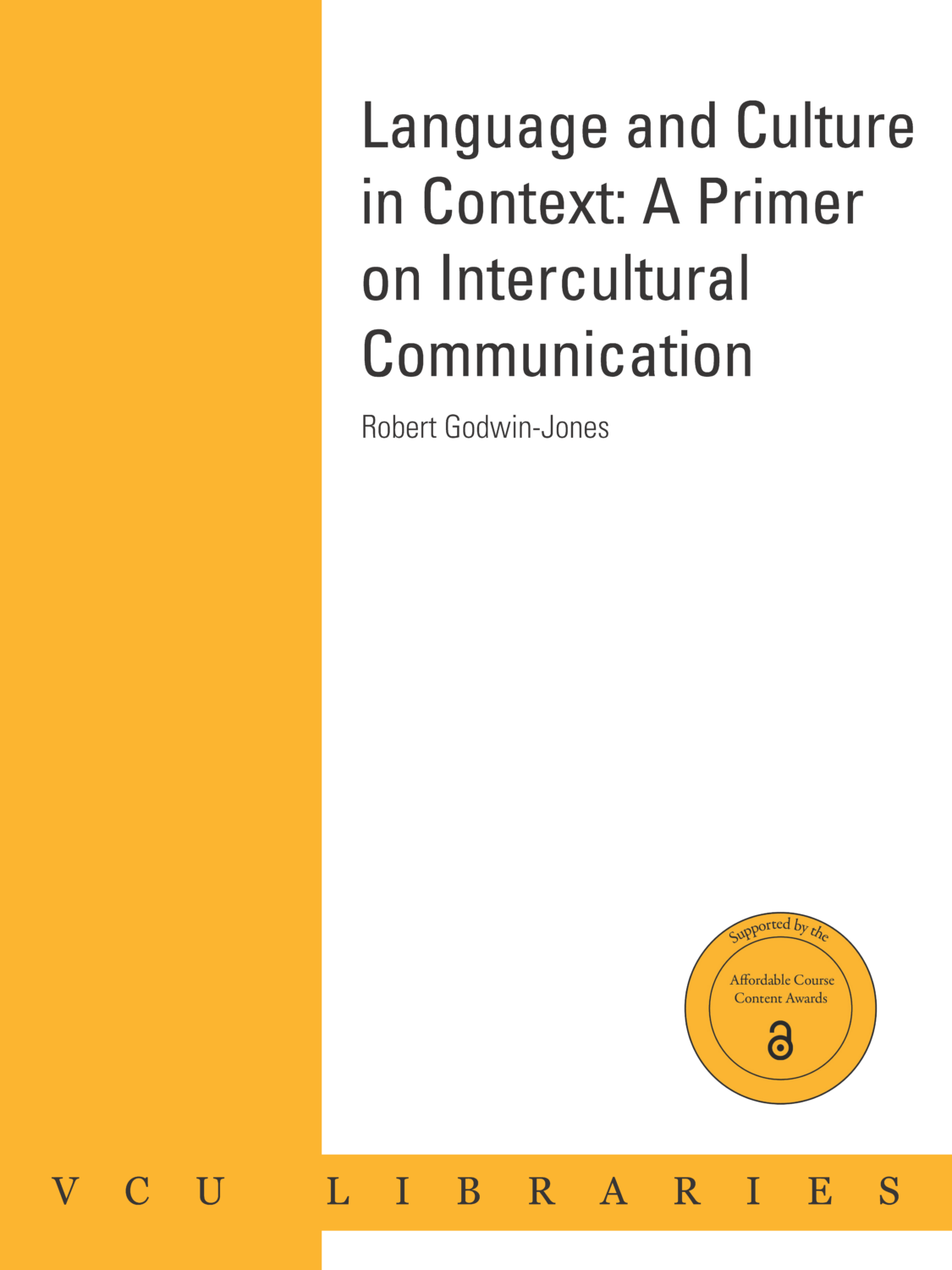Book Title: Language and Culture in Context: A Primer on Intercultural Communication

Download this book
Book Description: For the classroom-friendly version of this book, please view the website version of this text of this text. This Pressbook is intended to serve as a preservation copy of the website.
This textbook on intercultural communication takes a collaborative and interdisciplinary approach: incorporating views and experiences from scholars and sources of diverse global backgrounds, integrating research findings from other disciplines, and developing a multicultural and multi-linguistic approach.
Data dashboardAdoption Form
Contents
Book Information
Book Description
How intercultural communication is viewed as a discipline varies considerably from country to country. In many cases, intercultural communication is associated with professional areas such as business, education, healthcare, or hospitality services. In the US, intercultural communication is often taught within programs of communication studies. In Europe and Australia, it is commonly seen as a field within applied linguistics. Language and Culture in Context strives to incorporate findings and perspectives from all these approaches, but considers language, broadly conceived, as central to intercultural communication.
This textbook takes a collaborative and interdisciplinary approach: incorporating views and experiences from non-Anglo-American scholars and sources, integrating research findings from other disciplines, and developing a generally multicultural and multi-linguistic approach.
As the title of the textbook implies (“Language and Culture in Context”), the operating assumption throughout is that language and culture are inseparable and need to be understood contextually. Traditionally, culture and language have been treated as monolithic entities, comprised of discrete sets of knowledge and skills, which are enacted by an individual. However, culture and language are increasingly seen from socially situated perspectives. That emphasis is maintained here, with an exploration of how people use language (and other means) to create, maintain, and change identities. Culture is treated as socially constructed, not as a set of fixed values and behaviors.
This text will introduce readers to some of the key concepts in intercultural communication as traditionally presented in (North American) courses and textbooks, namely the study of differences between cultures, as represented in the works and theories of Edward Hall (1959) and Geert Hofstede (1980), but also remains rooted in the present. The availability of networked communication tools and services have changed radically how humans communicate and interact and have led to new kinds of individual identity formation, as well as new opportunities for both cooperation and miscommunication. Language and Culture in Context includes relevant discussion of cultures-of-use in digital communications, identity formation online, and privacy considerations. The text also interweaves throughout issues of social justice as they relate to individual and group encounters and communications, pulling examples of citizen journalism, the digital divide, and social media use in migrant communities.
Primarily designed for students of Communicating Across Cultures (WRLD 302), sections of this text have also been used in a team-taught seminar in India (Spring, 2018) on digital literacy and sustainable development in emerging economies.
License
Language and Culture in Context: A Primer on Intercultural Communication Copyright © 2023 by Robert Godwin-Jones is licensed under a Creative Commons Attribution-NonCommercial 4.0 International License, except where otherwise noted.
Subject
Cross-cultural / Intercultural studies and topics

